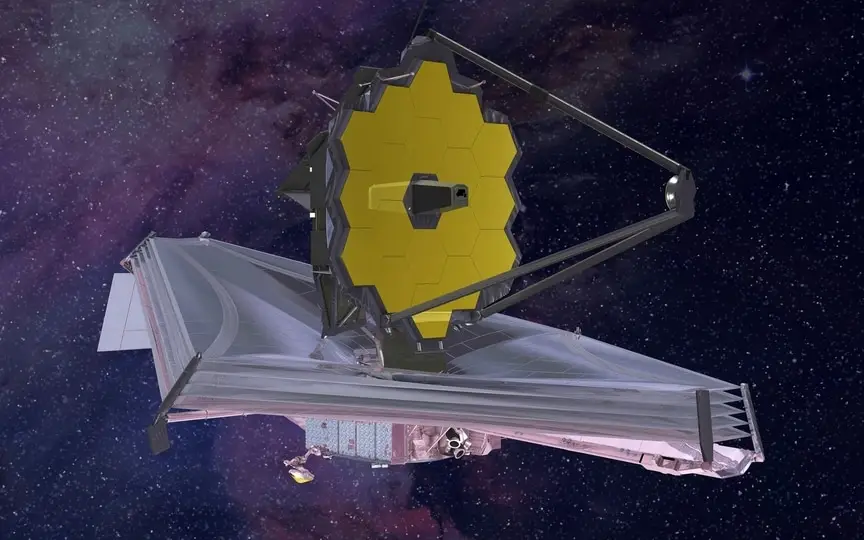James Webb Telescope Detects Possible Evidence of Life on Exoplanet
The James Webb Space Telescope has made a groundbreaking discovery by revealing the secrets of K2-18 b, a distant world located far away from Earth. Scientists have astonishingly detected the presence of carbon-based molecules, specifically methane and carbon dioxide, in the planet’s mysterious atmosphere. This celestial body, which is approximately 8.6 times the mass of Earth, has always been surrounded by intrigue. Recent research has suggested the exciting possibility that K2-18 b’s surface may be covered with vast oceans of water, accompanied by an atmosphere rich in hydrogen. Essentially, the Webb Space Telescope has unveiled intriguing indications of potential life.
K2-18 b’s heavenly dance
K2-18 b orbits the enigmatic cool dwarf star K2-18, which sits comfortably in the fabled “Goldilocks Belt”. In this cosmic sweet spot, the planet receives just the right amount of starlight—enough to keep liquid water on the surface without the risk of vaporization. Located about 120 light-years away in the constellation Leo, this intriguing world fits the intriguing description of a “Hycean planet.” Characterized as hot, watery realms shrouded in a hydrogen-dominated atmosphere, these hypothetical celestial beings have captured the imagination of scientists speculating about their potential to harbor life.
Views from the James Webb Telescope
Nikku Madhusudhan, lead author of the study, emphasized: “Our results highlight the importance of considering a variety of habitable environments when looking for life elsewhere. Traditionally, the search for life on exoplanets has focused primarily on the smaller rocky planets, but the larger Hycean worlds are significantly more favorable for atmospheric observations.”
By delving deeper into their findings, the researchers have pieced together an impressive puzzle. The abundance of methane and carbon dioxide, combined with the striking lack of ammonia, paints a fascinating picture—a sea of water hidden beneath the planet’s hydrogen-rich mantle. Remarkably, the research also hints at the possible presence of a molecule known as dimethyl sulfide (DMS), a compound that is produced on Earth exclusively by living organisms, especially phytoplankton in our oceans.
However, this intriguing hypothesis has not yet been set in cosmic stone. As Madhusudhan noted, “future Webb observations should be able to confirm whether DMS is indeed present in the atmosphere of K2-18 b at significant levels.”
Although K2-18 b undoubtedly resides in the habitable zone and its atmosphere is enriched with carbon-containing molecules, it is important to note that this alone does not guarantee the existence of life. The planet, with a radius 2.6 times that of Earth, is likely to have a substantial layer of high-pressure ice, a reminder of the enigmatic complexities that persist as we explore the far reaches of the cosmos.




